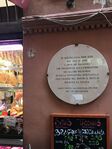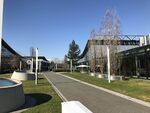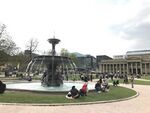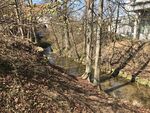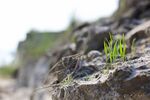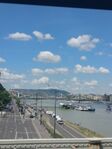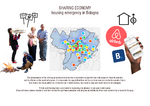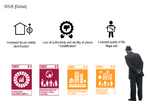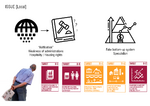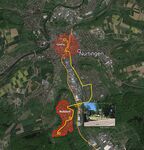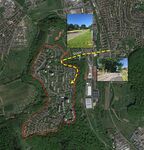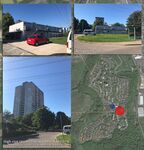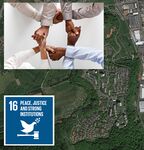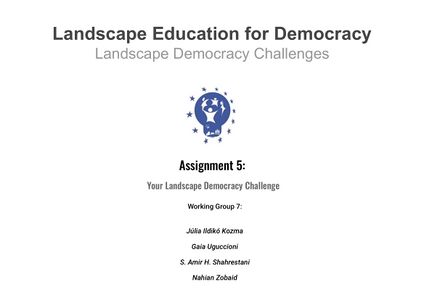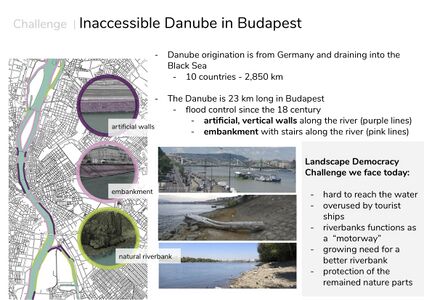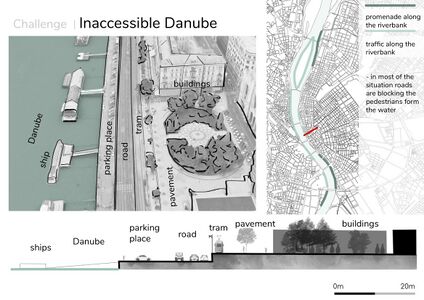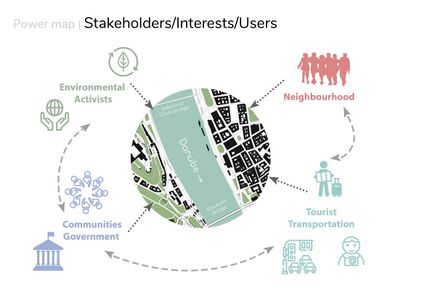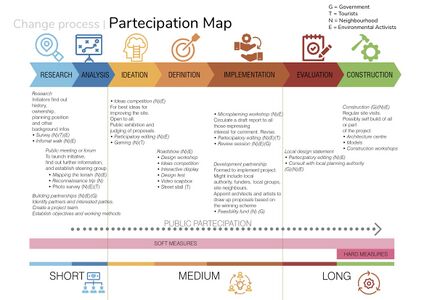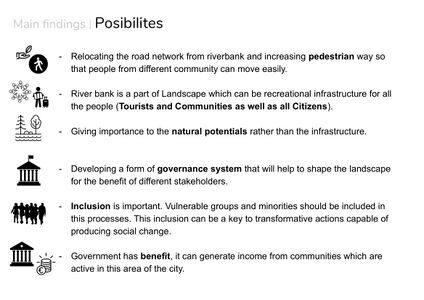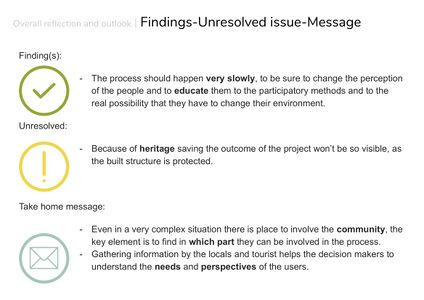LED Online Seminar 2019 - Working Group 7
--> Back to working group overview
Dear working group members. This is your group page and you will be completing the template gradually as we move through the seminar. Good luck and enjoy your collaboration!
Assignment 1 - Reading and Synthesizing Core Terminology
- You can read more details about this assignment here
- Readings are accessible via the resources page
Step 1: Your Landscape Democracy Manifestoes
Step 2: Define your readings
- Please add your readings selection for the terminology exercise before April 24:
A: Landscape and Democracy
1. Amir - Why is landscape beautiful? - Burckhardt, Lucius (1979)
2. Júlia - Urban Planning and Democracy - Júlia (1957)
3. Gaia - Meinig, D. W. (1979): "The Beholding Eye: Ten Versions of the Same Scene."
B: Concepts of Participation
1. Amir - Consensus Design - Day, Christopher (2002)
2. Gaia - Gaventa, John: The Powerful, the Powerless, and the Experts
3. Nahian - Hester, Randolph (2005): Whose Politics, Landscape Architecture
C: Community and Identity
1. Amir - Cinematic Landscapes - Welk Von Mossner, Alexa (2014)
2. Nahian - Nassauer, Joan Iverson (1995): Culture and Changing Landscape Structure, Landscape Ecology, vol. 10 no. 4.
D: Designing
1. Júlia - Design for Ecological Democracy - Randolph T. Hester (2006)
2. Gaia - Hester, Randolph: Life, Liberty and the Pursuit of Sustainable Happiness
3. Nahian - Pritzker Prize winning architect Alejandro Aravena on sustainable design and community involvement in Chile
E: Communicating a Vision 1. Júlia - - (0)
Steps 3 and 4: Concepts Selection and definition
- Each group member selects three relevant concepts derived from his/her readings and synthesize them/publish them on the wiki by May 15, 2019
- Group members reflect within their groups and define their chosen concepts into a shared definition to be posted on the wiki by June 12, 2019.
- Other group members will be able to comment on the definitions until June 30, 2019
- Each group will also report on their process to come to a set of shared definitions of key landscape democracy concepts on the wiki documentation until July 12, 2019
Concepts and definitions
Author 1: S.Amir H.Shahrestani
- Landscape and Democracy - Why is landscape beautiful? - Burckhardt, Lucius (1979)
The outcome of the people view of the same landscape is doubtless highly individual and every person has different aspect and criteria of it. The opinion of beautiful or ugly landscape comes from the people previous idea (childhood stories), therefore the people have different judgments.
- Concepts of Participation - Consensus Design - Day, Christopher (2002)
Better way to make ethical decisions is defined as a democratic way and consensual approach. In the democracy the majority's demands are influential and the minority’s requests are disregarded. Getting a more comprehensive solution (equitable, productive, conscious, participator) compromising is defined as a step to reach collective decisions and consensus.
- Community and Identity - Cinematic Landscapes - Welk Von Mossner, Alexa (2014)
Image of the landscape allows us to establish a relationship with the place through the sense of belonging. It performs an effective role in the transmission of the story by reflecting the identity of the space.
Author 2: Ildikó Júlia Kozma
- Landscape and Democracy
The role of the public in urbanism should be stronger. If we want more democratic cities, city dwellers must have more knowledge about the built environment which surround them. Without that they can’t live with their democratic rights.
- Designing
Ecology and democracy is to separate thing, but together they can give a better solution to many problems of urbanism. With well defined principles we can use ecological methods during designing.
- Communicating a Vision
In participatory design communicating your vision is a key element. Presentations hold by professionals, coauthoring design and all different kind of verbal and nonverbal communication method are needed to understand each other.
Author 3: Gaia Uguccioni
- Landscape and Democracy
Every landscape hides a meaning that is not explicit in the ordinary forms. Is a concept that lies utterly beyond science, that holds ideas, impressions and ineffable complexities that depends on how we are affected by it and from the values we associate to it.
- Concepts of Participation
Partecipatory processes are a form of access to a paradigm which the people had a little part in creating. Starts with the reappropriation of knowledge by those who are affected by it and evolves as a strategy in which the powerless develop, create, gain control and systematize their own science.
- Designing
In the modern broad cities is evident the disassociation from community and environment and the human behavior appear antagonistic to sustainability. Holistic insight should be pursuit to guide the design of urban forms and to find new directions for a reformulation of intents and ideals of fulfillment.
Author 4: Nahian Zobaid
- Concepts of Participation
A participatory approach in any development involves the community in Design process and give them the right to express their thought, vision and need. This concept can empower the unprivileged group of society if sensibly chosen in the design process.
- Community and Identity
Community identity is shaped by the custom, social and geographical environment of a particular place. Vernacular landscape are good example of community identity, as it represents the adaptation and thought process of local farm workers, land developers, home owners and other local professionals.
- Designing
Designing is the combination of multiple problems that leads to a simple yet innovative solution. The Designer needs to translate the force of people, common sense and nature into form to built a socially and climatically responsive design.
Step 5: Reflection
Step 6: Revised manifestoes
- please look again at your initial manifestoes and update them with any new aspects/prespectives you have taken up during this seminar
Assignment 2 - Your Landscape Symbols
- You can read more details about this assignment here
Landscape Symbols Author 1: Júlia Ildikó Kozma
“Szabihíd” project, Liberty Bridge urban picnic “Szabihíd” project started in 2017 when the Libert Bridge was closed due to constartion work. City dwellers and turist went there to enjoy the unique opportunity. At the beggining the city administration couldn’t handel the situation so they forbide to go there, but after a local orgaziation embraced this need and convienced the municipality to make a legal from. Since then the birdge is free from cars during the summer weekends and there are all different kind of activites makes this project more and more popular. 47.485755, 19.054959
Buda Castle, Hungarian National Gallery, Széchenyi National Library During the historical times the castle was the place for the king, but these days it is open for the public. People not only can see the castle but the Hungarian National Gallery and also a Széchenyi National Library take place there. It symbolize a democratyc change which maybe not obvios if you doesn’t have some knowledge about the place. 47.502262, 19.032800
Vegetable stands In the countryside small vegetable stands offer opportunity to buy fresh crop right form the a infield. Sometimes the owner is selling to you, sometimes only a box is there to collect the cost. I think it is also a symbol of trust and trust is something essentail for democracy. This system would not work without respect and understantment of the value of work. 47.557538, 10.749554
Landscape Symbols Author 2: Gaia Uguccioni
Bologna città [W]etropolitana_Not a subway access, but a sign of artistic performances that took place in those spaces and that has become part of a stratified landscape. A modern monument that represents the aesthetics of the provisional, infiltrates our landscape in a work of continuous adaptation, with a tangible subliminal act plausible enough to become familiar and mimically incorporated.
al Żigànt_The Fountain of Neptune, also known as "the Giant", is a renaissance opera that stands into Piazza Maggiore, the most important square in Bologna. It was designed to glorify the papal government (as Neptune dominates the waters, so the Pope dominates the world). It is currently one of the most famous and recognized symbols of the city.
Landscape Symbols Auther 3: Seyed Amir Hosseini Shahrestani
Roof garden of Exhibition hall Stuttgart.The place which people can take rest from chaos of Exhibition hall, to get together, talk and know each other. most of the time people contact each other after a short conversation. I would like to name this place ‘’the place of socializing and business’’. 48.693282, 9.186010
Landscape Symbols Author 4: Nahian Zobaid
This photograph clicked by me in Bangladesh. As we know that Bangladesh is a riverine country and it is very common to get new land (river sand bed / Char) in the river. Sometimes some of these new lands last for long and sometimes some of those vanish in a short time. As a agricultural country (Bangladesh) most of the country men are farmers and when they see that there are little bit green (like the photograph) on the river sand bed / char, then they get hope to get new agricultural land. These green are the symbol of hope for these farmers. Geo-location 20'34N to 26'38N latitude, 88'01E to 92'41E longitude
The main attraction of the Swadhinata Stambha is the Stambha / monument itself. Stambha means pillar or tower in Bengali. The tower was built on the place where the commander-in-chief of East Pakistan Army Amir Abdullah Khan Niazi signed the papers of his surrender. During night, the tower looks elegant as the rays of light come out from every single inches of the tower. The whole tower turns into a white pillar. The tower is square according to the plan and is 16 feet wide from every side with an area of 64 inches. The underground museum of the project comprises several photographs with historical significance. There are a number of terracotta murals on war-heroes and the events of the Liberation War, a 2000-seat auditorium, and an open-air theater. The eternal flame stands beside the tower. The water body of the project reflects the whole tower all the day and increases the beauty of the project. But the water body is under potential threat as the local slum-dwellers use it for their daily needs. This monument is representing the past , present and future of Bangladesh at a time. Geo location: 23°42′N 90°22′E
In this picture, we can see the water channels in land. The place is in Sylhet, one of the district of Bangladesh. People use the boats for commuting. Also they have the access to the land but they are comfortable with the water boats. The evergreen forest is situated by the river Goain and linked with the channel Chengir Khal. Most of the trees growing here are the Millettia pinnata. The forest is submerged under 20–30 feet water in the rainy season. For the rest of the year, the water level is about 10 feet deep. Geo location: 25°00.025′N 91°58.180′E
Assignment 3 - Role Play on Landscape Democracy "movers and shakers"
- You can read more details about this assignment here
Assignment 4 - Your Landscape Democracy Challenge
- You can read more details about this assignment here
- Each group member will specify a landscape democracy challenge in his/her environment
Landscape Democracy Challenge 1: Ildikó Júlia Kozma
- Give a title to your challenge
Your references:
Landscape Democracy Challenge 2: Gaia Uguccioni
- Sharing economy - Housing emergency in Bologna
Your references:
Landscape Democracy Challenge 3: S.Amir H.Shahrestani
- The location of the Roßdorf (quarter) in Nürtingen, Germany
caption: why did you select this case? - During last months that I’m living and studying in this city, I realized this quarter, which has less identity to other settlement in this area. The idea of developing the city in this specific place (about 40 years ago) was: to build Modern Architecture buildings with the aspect of better future. But the thing that Architects and designers forgot to concentrate on it was: are the citizen comfort/satisfaction with this kind of Architecture? But this is not the only reason that this project is not succeeding.
caption: what is the issue/conflict - Living up the hill and in new and modern architecture building is fascinating, but public transportation is the main problem, if you are the person who loves to ride bicycle, it would be difficult to ride on slope, if you are aging it becomes more and more difficult then. The first train-station is the downhill, and the bus comes every hour. In this case the people fill they are out of the city, they never think they are part of this city at all.
caption: what is the issue/conflict (2) - The idea was developing city in this part, but from the first time, most of foreigners who were living in the city moved to this zone and most of inhabitants are not German. Few years ago government built a refugee house there and made this situation more complicated. The idea of helping refugees are brilliant, but how refugees can migrate in this country when they are living just with foreigners in a zone (like isolated zone of the city).
Your references:
Landscape Democracy Challenge 4
- Reviving Canals
- Yourname challenge 1.jpg
caption: Dhaka City has been suffering from many environmental problems including flooding, water logging and other related problems. Urbanization, which is occurring very fast and with larger magnitude in Dhaka, is the intrinsic reason behind these problems. High rate of urbanization causes extensive urban area expansion and as a result canals, wetland and other water bodies are quickly vanishing from the landscape. This study shows the present physical condition of the canals; identifies the processes of canal encroachment; represents the consequences of canal encroachment. 13 canals of 50 were surveyed; local people were surveyed to identify the impact and processes of encroachment. According to this study, canals of Dhaka city are under serious threat of extinction and require immediate recovery actions. Canals are being encroached in various styles and this study identifies five: unauthorized land filling, illegal construction over canal, expansion of slum, solid waste dumping, taking advantage of lack of awareness of local people as well as government agencies. However, this study also discusses the grave consequences of canal encroachment: increasing flood vulnerability, wane of ground water recharge area and ground water level, collapse of natural drainage system, loss of local ecology and biodiversity.
- Yourname challenge 2.jpg
caption: what is the issue/conflict (1)
- Yourname challenge 3.jpg
caption: what is the issue/conflict (2)
- Yourname challenge 4.jpg
caption: who are the actors?
Your references:
- ...
- ...
Your Democratic Change Process
- Inaccessible Danube in Budapest
Reflection
- The process should happen very slowly, to be sure to change the perception of the people and to educate them to the participatory methods and to the real possibility that they have to change their environment.
- Because of heritage saving the outcome of the project won’t be so visible, as the built structure is protected.
- ....
Conclusion:
- Even in a very complex situation there is place to involve the community, the key element is to find in which part they can be involved in the process.
- Gathering information by the locals and tourist helps the decision makers to understand the needs and perspectives of the users.
- ....
Your references
- ...
- ...
- ...
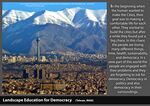

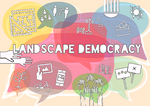
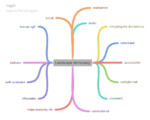
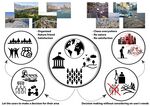

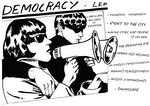
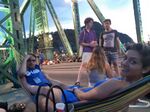

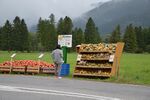
![Bologna città [W]etropolitana_Not a subway access, but a sign of artistic performances that took place in those spaces and that has become part of a stratified landscape. A modern monument that represents the aesthetics of the provisional, infiltrates our landscape in a work of continuous adaptation, with a tangible subliminal act plausible enough to become familiar and mimically incorporated.](/images/thumb/1/1b/1_Wetropolitana.jpg/112px-1_Wetropolitana.jpg)

